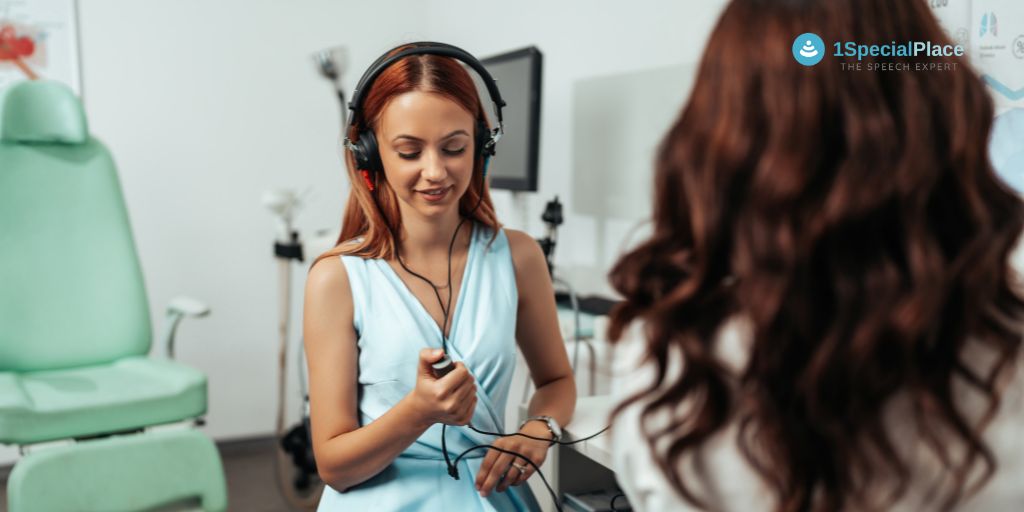
The Sound of Progress: Teleaudiology and Remote Pure Tone Audiometry
The Sound of Progress: Teleaudiology and Remote Pure Tone Audiometry
In a world where technology continually reshapes the way we approach healthcare, audiology is no exception. The integration of teleaudiology and remote pure tone audiometry represents a significant leap forward in making hearing healthcare more accessible and convenient for individuals across the globe. This innovative approach not only addresses the challenges of traditional audiometry but also opens up new possibilities for reaching underserved populations.
Bridging the Distance: The Rise of Teleaudiology
Teleaudiology, a branch of telehealth, involves the delivery of audiological services through telecommunication technologies. It brings audiology to the doorstep of patients, eliminating geographical barriers and enhancing access to hearing healthcare. Remote consultations, counseling, and even diagnostic tests like pure tone audiometry can now be conducted with ease.
Advantages of Teleaudiology:
- Accessibility: Teleaudiology breaks down geographical constraints, ensuring that individuals in remote or underserved areas can receive quality audiological care.
- Convenience: Patients no longer need to travel long distances for routine audiometric tests. Teleaudiology allows them to undergo assessments from the comfort of their homes.
- Timely Intervention: Quick access to audiometric services enables timely intervention, leading to better outcomes for conditions such as hearing loss.
Remote Pure Tone Audiometry: Testing Beyond Boundaries
Pure tone audiometry is a fundamental test used to assess hearing sensitivity across different frequencies. Traditionally conducted in a controlled environment within a clinic, remote pure tone audiometry leverages technology to bring this essential test into people’s homes.
How Remote Pure Tone Audiometry Works:
- Mobile Apps and Web Platforms: Specialized mobile applications or web platforms guide users through the audiometric test, presenting tones of varying frequencies and intensities.
- Headphones or Earphones: Patients use calibrated headphones or earphones to ensure accurate sound delivery during the test.
- Real-time Data Transmission: The results are transmitted in real-time to audiologists who can remotely analyze the data and provide immediate feedback or further recommendations.
Challenges and Solutions:
- Calibration and Standardization: Ensuring that the equipment used by patients is calibrated and meets standardized requirements is crucial. Solutions involve providing calibrated equipment or using device-specific calibration algorithms.
- User Training: Patients need clear instructions on how to conduct the test correctly. User-friendly interfaces and video tutorials can address this challenge.
The Future Sounds Promising
As we witness the rapid integration of teleaudiology and remote pure tone audiometry into mainstream healthcare, it’s evident that the future holds tremendous promise. Some key areas of development include:
- Artificial Intelligence Integration: Machine learning algorithms can enhance the accuracy of remote audiometric assessments, aiding in more precise diagnostics.
- Wearable Technology: The integration of audiometric testing into wearable devices opens up possibilities for continuous monitoring of hearing health.
- Global Outreach: Teleaudiology allows audiologists to extend their expertise beyond borders, participating in global outreach programs and initiatives.
Benefits of Telehealth in Patient Care:
1. Accessibility and Convenience:
Telehealth eliminates geographical barriers, providing patients with access to healthcare services regardless of their location. It’s particularly advantageous for individuals in rural or underserved areas who might face challenges in reaching traditional healthcare facilities.
2. Timely Intervention:
Virtual consultations enable timely medical intervention, reducing the waiting time for patients. Faster access to healthcare professionals can lead to swifter diagnosis and treatment, especially for conditions that require immediate attention.
3. Enhanced Continuity of Care:
Telehealth fosters better continuity of care by enabling ongoing communication between patients and healthcare providers. It facilitates follow-up appointments, medication management, and monitoring of chronic conditions, promoting a more comprehensive and consistent approach to healthcare.
4. Cost Savings:
For both patients and healthcare systems, telehealth can lead to cost savings. Reduced travel expenses, lower administrative costs, and fewer hospital admissions for routine check-ups contribute to economic benefits.
5. Increased Patient Engagement:
Virtual platforms often encourage active patient participation in their healthcare journey. Patients may feel more empowered to engage in discussions about their health, ask questions, and take a proactive role in managing their well-being.
Read a detailed blog on 10 ways to protect your ears
Conclusion: A Symphony of Accessible Hearing Healthcare
Teleaudiology and remote pure tone audiometry are composing a symphony of change in the field of audiology. By leveraging technology, we are creating a harmonious blend of accessibility, convenience, and accuracy in hearing healthcare services. As these innovations continue to evolve, we anticipate a future where everyone, regardless of their location, can participate fully in the sounds of life.
- Unlocking Speech through Pediatric Occupational Therapy for Kids - June 26, 2024
- News of the month for March 2024 - April 16, 2024
- News of the month for Jan 2024 - January 29, 2024

Leave a Comment
(0 Comments)